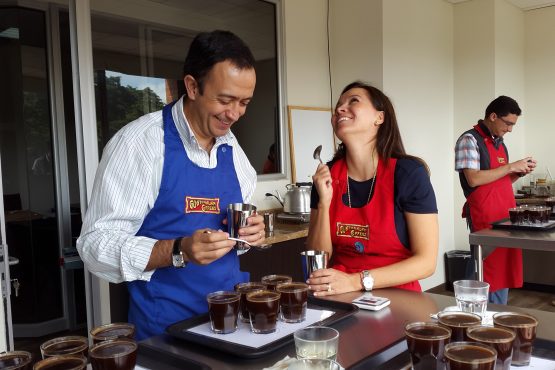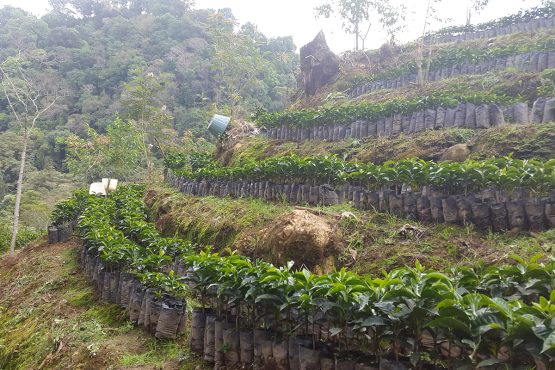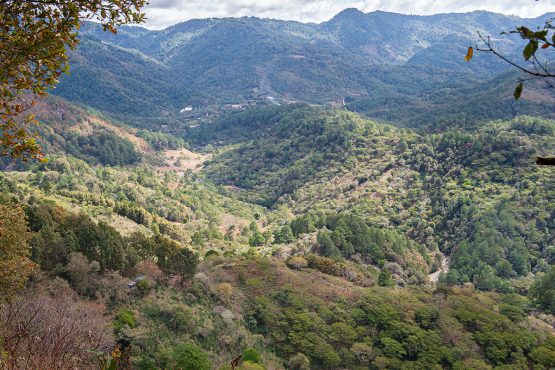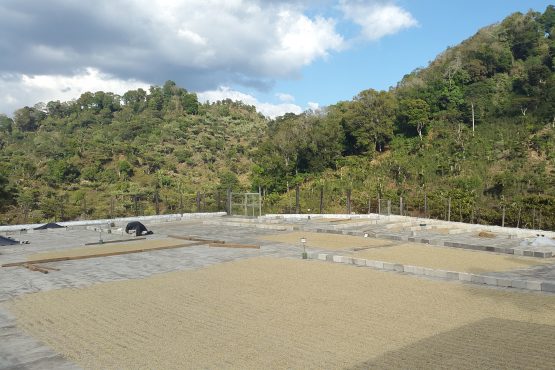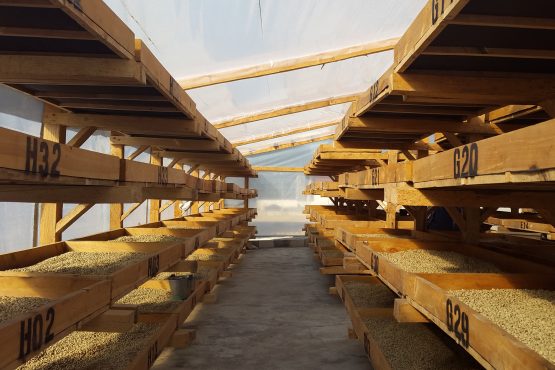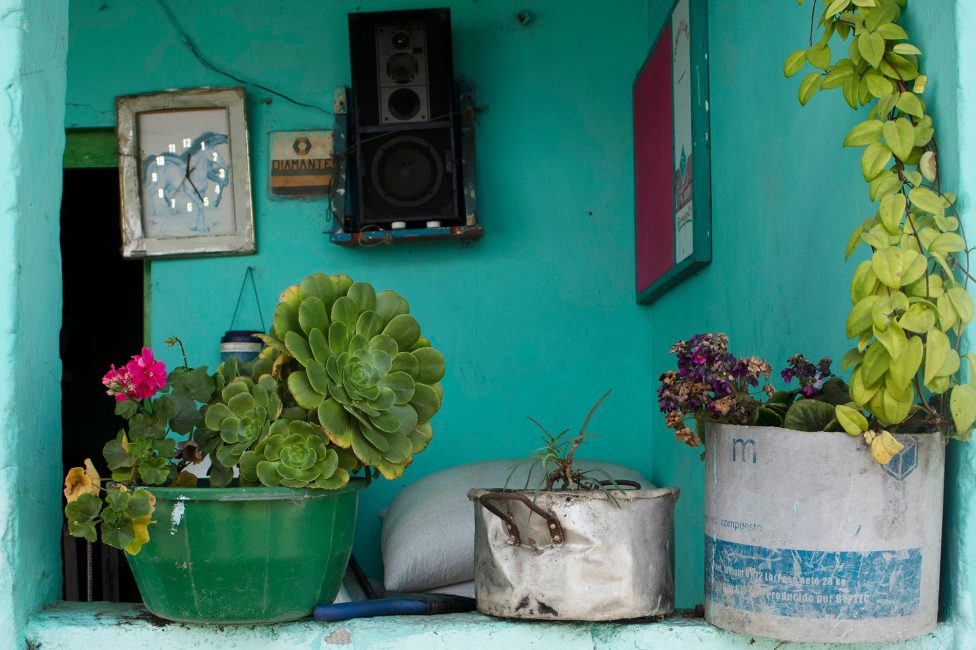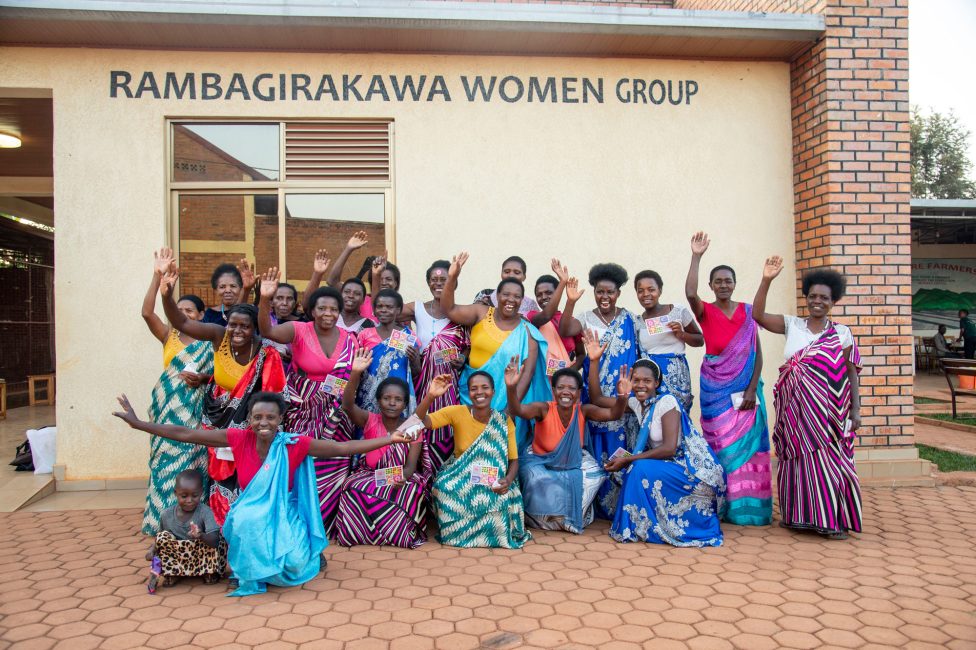Amatillo
Caramelised fig, plum and almond, with cola-like acidity and brown sugar sweetness. Great balance and structure.
Amatillo is an eighteen hectare plot of land that is part of the larger Finca Santa Ana. This estate is divided into four parcels: Santa Ana, Idolia, Cielito, and Amatillo. They are all located on the La Gavia mountain, near the municipality of Pueblo Nuevo Viñas and between the Tecuamburro and Pacaya volcanoes. The latter is one of three remaining active volcanoes in Guatemala, and is found in the up-and-coming coffee region of Santa Rosa.
The estate was established over 30 years ago when patriarch Roberto Diaz Marroquin first acquired the land. Driven by a passion for high quality coffee, Roberto quickly became an important figure among the country’s specialty-focused producers. Under his management, the farm was planted with Bourbon, Catuaí, Pacamara, Pache and SL-28 – varieties well suited to the annual rainfall, high elevation and moisture-rich clay-loam soil of the farm.
As is common in Guatemala, coffee at Amatillo is grown under the shade of Garvilea trees (which is part of the Inga family), as well as some native oak and cedar trees. The reason for this is twofold: it protects the coffee trees from direct sunlight and harsh winds; and by planting shade trees the farm can contribute to the region’s efforts in protecting the local flora and fauna. This protection from the elements is pivotal at Amatillo, as the plot’s location at the peak of a mountain would leave the coffee trees overtly exposed otherwise.
Roberto also implemented meticulous practices at the estate, introducing micro-lot separation, a stringent cupping protocol, and the processing of specially-prepared lots. All of this hard work proved fruitful and the farm has gone on to place several times in the country’s Cup of Excellence competition.
After Roberto passed away suddenly, son Fernando Diaz took over the administration of the estate with the goal of continuing his father’s impeccable work, which clearly produced great results. As part of this objective, Fernando plans to introduce rare varieties like Gesha into the estate, and has already started a nursery on-site. He has also implemented the use of African drying beds, to increase the farm’s production capacity and to improve the coffee’s drying conditions.
ABOUT SANTA ROSA
Though the Santa Rosa department is technically not one of ANACAFE’s official coffee-growing origins, it has become one of the country’s most important regions. Farms in Santa Rosa are spread out across the expanse of the department – meaning climatic conditions can vary drastically from one estate to another, creating a multitude of unique cup profiles.
The region is known for producing much of the country’s commercial-grade coffee, but the range of micro-climates and rich, volcanic soils found in Santa Rosa offer great potential for specialty-grade coffee production. Evidence of this are the 2022 Cup of Excellence results, when 5 coffees from Santa Rosa were awarded for the first time in the competition’s history.
The departments’ north is a valley surrounded by mountains that creates a corridor for dry winds from the Atlantic Ocean to travel south all the way to the Pacific. Because of this, farms in the north tend to be drier and experience earlier harvests (like in La Bugambilia), while those in the south are humid and experience longer rainier seasons.
HOW THIS COFFEE WAS PROCESSED
Harvest at Amatillo begins in January, when the weather is still cool, and ends in March, when the heat intensifies. This climatic pattern is key to the farm’s success: the cooler weather allows for coffee cherries to mature slowly as the harvest begins (leading to cherries with higher sugar content), while the hotter weather creates the kind of conditions necessary for coffee to dry adequately and reach an ideal moisture content when the harvest ends.
During the harvest, the coffee was meticulously hand-picked by a dedicated team of pickers. The freshly picked cherries then went through 12 hours of aerobic fermentation in permeable nylon sacks, as these keep them stable by matching their internal temperature with that of the surrounding environment. The team at Amatillo was very careful to place these in a cool, dry place to protect them from the elements, as high temperatures can accelerate fermentation and introduce undesirable flavours.
Cherries were then depulped at on-site wet mill and fermented in traditional tanks for 48 hours. The beans were then washed to remove any remaining pulp and carefully placed on concrete patios for a “pre-drying” stage. After spending approximately two days on patios, parchment was placed on raised beds to complete drying for a total of 10 days.

